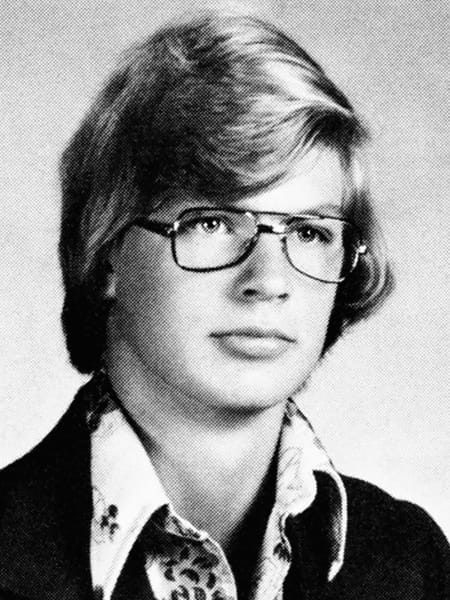A smiling boy in a family photo — bright, blonde-haired, full of energy — born in Milwaukee, Wisconsin, in 1960. His parents, a young chemistry student and a teletype instructor, had every reason to believe their first child would grow up to have a happy life. For the first few years, he was playful and sociable, showing no sign of what would come.

The change after surgery
Everything began to shift after a medical operation when he was only four years old. The cheerful child suddenly became quiet, withdrawn, and fearful. His parents noticed the difference but assumed it was temporary. At home, constant tension filled the air — his father focused on studies, his mother struggled with depression, and arguments were frequent.
Isolation and early signs
By the time school started, teachers described the boy as polite but distant. His mother’s illnesses and his parents’ fights left him emotionally alone. After a move to Ohio, the boy found new “interests.” One day, his father showed him how to clean animal bones for a science project — a moment that planted an obsession.

Fascination turns dark
What began as curiosity about biology became something macabre. He started collecting insects and small animals, later preserving them in jars. He built a small hut in the woods, where he dissected roadkill and studied the bones. Neighbors thought it was a harmless hobby. His father, a scientist, encouraged it, unaware of what it might awaken.
Trouble at home
As his parents’ marriage crumbled, the boy grew lonelier. He began drinking secretly in high school, carrying liquor in his jacket. Friends described him as odd — performing strange pranks, mimicking others, making unsettling noises in class — yet still managing to make people laugh. Beneath the humor, something darker was building.
The first victim
In June 1978, only weeks after graduating, he picked up a hitchhiker. What followed marked the beginning of a series of crimes that would horrify the nation. Over the next thirteen years, he murdered seventeen men, often after drugging them. Some victims were dismembered; others were subjected to acts too disturbing to describe in full detail.
Arrest and discovery

His arrest in 1991 exposed the unimaginable: body parts in his refrigerator, photographs of victims, and evidence of cannibalism and necrophilia. The world was stunned that the same smiling boy from old photographs could become Jeffrey Lionel Dahmer — later known as the Milwaukee Cannibal.
Aftermath
Dahmer was convicted in 1992 and sentenced to multiple life terms. He was killed in prison in 1994. His story remains a haunting reminder that evil can emerge from the most ordinary beginnings — and that behind some smiles, darkness silently grows.